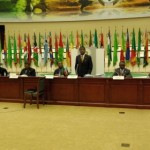In October 2015 India will host the third India-Africa Forum Summit (IAFS III). Originally scheduled for December 2014 but postponed because of the Ebola crisis, IAS III promises to be a spectacular event. More than 50 African states as well as representatives from the African Union (AU) and continental bodies like the New Partnership for Africa’s Development (NEPAD) agency have been invited for the meeting in New Delhi.
This is a significant departure from the low-key Congress-led summits of 2008 and 2011, where only 14 African governments, together with AU officials, participated in the discussions. In contrast, IAFS III is likely to be one of the largest gatherings of foreign leaders in the Indian capital since it hosted the 1983 Commonwealth Summit.
With the Indira Gandhi National Stadium as the main venue, IAFS III should be seen as more than just an event of diplomatic rhetoric. Not only that, it must also be examined in the context of several dimensions and issues that are critical to the India-Africa engagement.
The most prominent of these is that IAFS III will take place under a new Indian administration. Since taking office, the Modi government’s foreign policy has widely been seen as proactive and infused with rigor. This—the perception as well as the new vitality—is bound to impact IAFS III.
In his year-plus in office, Prime Minister Narendra Modi has visited over 20 countries, and he has emphasised the inextricable links between foreign policy and economics by steadily pushing his brand of ‘Make in India’ economics.
But how does Africa fit into this new foreign policy outlook of India? So far, Africa has not featured prominently in the list of Modi’s 20-odd official visits, except his stops in Mauritius and Seychelles, which, of course, are in the Indian Ocean Rim.
But as the ‘Make in India’ initiative deepens, African countries must be clear about its implications for their regional production networks, integration into global value chains, and their national industrialisation programmes.
Africa must recognise that it is time to strategically engineer an integrated industrial development programme that enables it to compete with India in the global value chain. India is active in both the high-value capital-intensive services sector and the low-cost labour intensive sectors of global value chains. It is not going to relinquish this position easily, especially if it is to ensure employment for its growing population.
One example is the diamond industry. India’s comparative advantage in the cutting and polishing streams raises related issues for Botswana, which relies on uncut diamonds as a major export. Even though under IAFS II in 2011 India announced the setting up of a Diamond Institute in Botswana, it is unclear whether competing with India in this sector will help the southern African country’s integration into the global diamond production network (outside of extraction) or the country’s industrialisation prospects.
Secondly, while India is becoming more confident in its foreign policy, African countries must gauge how this can work in their favour. At a meeting hosted by an Indian think tank in March in New Delhi, it was clear that the Africa focus was becoming tepid. Much of this is due to the inability of African countries to take ownership of projects. For example, the transfer of the Pan-African e-network to the AU has been delayed because the AU does not have the resources to take over the project. Similarly, African countries have been unable to identify, along with their Indian counterparts, how training and capacity-building programmes can be tailored to their specific needs.
Third, and perhaps most important, is that with the “African Rising” narrative stabilising, if not tapering off, Africa has to be clear about what it wants to achieve from IAFS III and how it can capitalise on the “post-rising” period. Defining a realistic strategy that is based on pragmatic outcomes and deliverables must inform the deliberations in October.
Participants must also remember that the Indian government has indicated that IAFS III will not be about big headline announcements; rather, it will be a review of projects implemented and of the engagement since IAFS I in 2008. African governments must be prepared for less attention-grabbing declarations and start demonstrating that they too are willing to commit resources and responsibility to the IAFS process.
At the same time, India must not compare itself to China’s engagement in Africa, and instead it can demonstrate that its renewed foreign policy focus puts to rest previous perceptions that New Delhi bypasses Africa.
Sanusha Naidu is a senior research associate at the Institute for Global Dialogue in Pretoria, a research associate with the Department of Political Science at the University of Pretoria, and a project manager for the Africa-Emerging Powers Programme at Fahamu—the Pan-African Network for Social Justice Issues based in Nairobi.
This article was exclusively written for Gateway House: Indian Council on Global Relations. You can read more exclusive content here.
For interview requests with the author, or for permission to republish, please contact outreach@gatewayhouse.in.
© Copyright 2015 Gateway House: Indian Council on Global Relations. All rights reserved. Any unauthorized copying or reproduction is strictly prohibited


